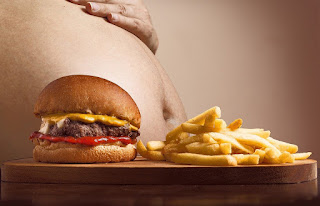 |
| Distorted television image |
Although this sounds like a new kind of
psychological disability, it’s not. Cognitive
distortions
are inaccurate perceptions of reality. These distortions come from types of
thinking that can damage our personal wellness and, when a group of people
fall into the same style, can result in dangerous uncivil behavior.
What are some types of thinking that employ
cognitive distortion? Some common ones are mind reading, permanence, emotional
reasoning, catastrophizing, and polarization.
Mind
reading
happens when we are given only part of a communication and our thoughts then
predict the remainder. Since most of us have a natural negativity bias, we
often think up the worst-case scenario.
This is a mental shortcut, but it can lead
us in entirely the wrong direction. A better strategy is to ask the person
sending the abbreviated message for additional clarity.
“You texted me that we had to talk as soon
as I got home from work. Did I forget our anniversary?” “No, nothing like that.
I’m pregnant!”
“I saw you leave during my presentation. Is
my thinking on this topic flawed?” “Not at all. I agree with you. I just really
had to get to the restroom.”
Permanence is the mistaken
belief that a situation will last forever. This is usually expressed in terms
of absolute words. “I am always clumsy.” “I will never be able to hold a job.” “We are always going to have to wear a mask when we leave the house.”
If you find yourself thinking like this,
challenge the thought by restating it without absolutes. “Gosh, that was clumsy
of me. Next time I will watch where I step.” “I got laid off from that job, but
I found it after looking for only a week. I can beef up my resume with
volunteer work until I find another job.” Challenge thoughts of permanence with
counterevidence.
Emotional
reasoning
falsely translates a feeling into a personal description. “I feel bad now, so I
must be a bad person.” “I feel angry at my spouse, so I must be a poor
partner.”
The best way to combat this cognitive
distortion is to recognize that no matter how strong the emotion, it will pass;
feelings always change, eventually. Emotions do not define us. Remind yourself
of this when a strong emotion hits. “I feel terrible now because that project
didn’t work out. It’s OK to feel bad about it, because that means it was
important and I really tried hard. I can try something different next time.”
Catastrophizing occurs when your
thoughts maximize or minimize outcomes. You jump to conclusions based on
overemphasizing unimportant facts or minimizing important ones. “Oh no! I
noticed a lump under my skin. I’m going to die of cancer.” “Sure, he says mean
and untrue things about me to his family. I must be an inadequate wife.”
Catastrophizing is
exaggerating. To counter this type of thinking, focus on specific,
perhaps small, details that are not as extreme.
Polarization is all-or-nothing
thinking–either this or not-this,
with no middle ground. The two opposite categories tend to be at the extremes
of a continuum with no consideration of intermediate positions. You will often
see this on social media. “If you don’t believe as I do, you are evil.” “You
have to accept my solution or you will cause the situation to fail.”
When counteracting this style of thinking,
whether by yourself or by someone else, it is important to acknowledge that the
extreme positions do both exist. Then offer an intermediate suggestion as a
“however.”
To read more about these and other forms of
cognitive distortion, please see the following:




